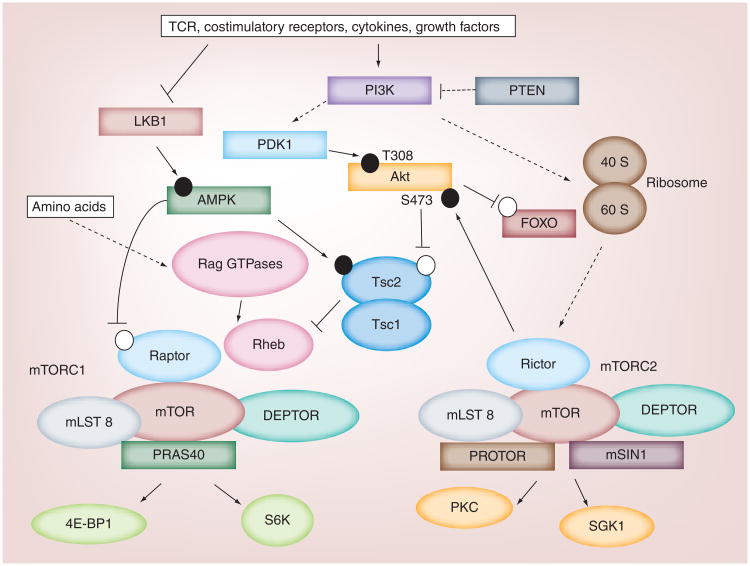Figure 2. Overview of mTOR signaling.
Antigen stimulation via the TCR, in combination with costimulatory receptors, cytokines and growth factors, inhibit LKB1-AMPK signaling and drive PI3K-PDK1-Akt signaling. These events subsequently inactivate the Tsc1/Tsc2 complex, which inhibits mTORC1 activity. When activated, mTORC1 phosphorylates downstream proteins, including S6K and 4E-BP1, to enhance protein synthesis and alter metabolic programs. Ultimately, these changes direct cell fate decisions and promote cell growth, proliferation or survival. Although the mechanisms are not clear, mTORC2 is also catalytically activated upon T-cell activation, which leads to the phosphorylation of Akt S473, PKC and SGK1. mTORC2 signaling influences metabolic programs and protein synthesis, but can also influence cytoskeletal rearrangements. In this diagram, the black and white circles represent activating and inhibitory phosphorylation events, respectively.
TCR: T-cell antigen receptor.

